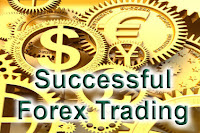If your wish is to get involved in the largest traded
asset in the world, the current market, then it is now prime time for you to
trade in the Forex Market. While you are wondering how to get started, don’t be;
this post will try to provide you with all the required information. Here are
the tips you should know for you start trading currencies.

- Know yourself. Define your risk tolerance and understand your needs:To make money in trading, you must first be well versed with the markets. To be well versed with the markets, you must recognize yourself. The first step to start trading is know your risk tolerance level and make sure you have not allocated excessive money to forex trading. This means that you must carefully understand and analyze financial goals and needs.
- Learn trading by using a demo account:Before you start trading forex, you need to learn all you can by taking advantage of demo accounts which are provided free of cost by several trading platforms. Trading on demo account will allow you to learn how forex actually works, learn how the trading terminal works; explore its strengths and weaknesses. Trade on a demo account before you can test things out in the real market. It is essential for you to learn how precisely the Foreign currency market works and how to trade prior to getting started.
- Learn to calculate your moves and way to draw your own conclusion:Perhaps this may be the only way for you to become successful in the currency market and make money for yourself.
- Avoid Trading in many markets at the same time: Trading at same time in many different markets or even in a lot of different currencies makes you careless, reckless and confused which will eventually led to you to losses. Make sure you concentrate on major currencies or major market. Don’t over trade. It is hard to master all the different kinds of markets that are available in the world hence it is better to restrict yourself to currencies that you are familiar with.
- Keep it Simple:Your trading plans and the
analysis of your trades should be simple and easily understood and explained. Currency trading is not rocket science, you don’t
need to be a mathematical genius or trading expert to makes lots of money in
forex trading. Instead, clarity of vision, well defined goals and plans is
enough for you to have a respectable career in Forex trading.
- Placing a Stop Order:To Limit your losses and maximize your gains, it is very essential for you to utilize the stop loss order. It will put an end to trades once the amount you have invested falls below the set amount. Placing a stop loss order will help you follow trading disciplines.
- Follow you plan and your signals:Don’t just blindly copy some other traders. Even an expert trader makes mistakes. Follow your own plans and your signals rather than following others.
- Have an Exit Strategy:If you are unable to make any gains in the forex market and if you are suffering constant losses, then it is better for you to get out. Having an exit strategy will help you avoid impulsive decisions.









